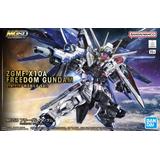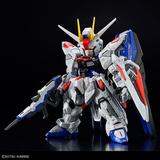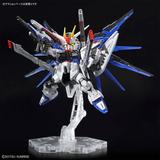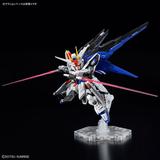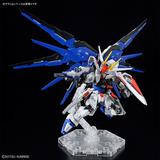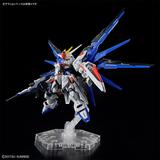After click "Buy Now", the item are placed in PRIVATE WAREHOUSE.

|
|
Backordered
MGSD Freedom Gundam (Gundam Seed)
by Bandai
$30.63 USD
This item is limited to 1 per person.
Temporarily out of stock. Place an order now to enter the purchase queue when stock becomes available. Future arrival date is currently unknown.
Description
This is a posable, Master-Grade injection-plastic kit of an item from the Gundam universe.
Bandai's taken the incredible plamo technology of the Master Grade (MG) series and condensed it into the body of an SD Gundam!
The very first kit in the high-end SD brand "MGSD" lineup is the Freedom Gundam, packed with the most mobility, gimmicks, and details in the history of the SD series!
- When built, the MGSD Freedom Gundam is approximately 115mm in height, with many parts of the internal frame equipped with movable gimmicks for smooth articulation.
- The main camera and twin eyes are made of double-layered structure with clear parts.
- Bandai's new "Real Metallic Gloss Injection" technology is used in various parts to achieve a metallic effect.
- New "Reflection Cut" reflective mechanism is used on the clear parts inside the wing binder.
- Molding color of the external armor is 2-tone color composition to add more precision.
- The head is movable on three axes. The internal structure allows for a variety of poses such as chin pulling and face protrusion. Multiple movable axes built into the torso allow for a wide range of left/right swinging, forward/backward tilting motion.
- Swingable hip joints greatly increase the range of motion of the legs. Swing mechanism at the shoulder joints enhances the range of motion of the arms. Forearms are equipped with an extension gimmick, allowing the arms to be bent deeper.
- Knee armor and vernier behind the knees are interlocked when bending the legs to ensure a full range of motion. In addition, the movable toes allow for a natural kneeling position despite being an SD.
[Accessories]
- Beam Rifle x 1
- Beam Shield x 1
- Beam saber blade x 2
- Marking sticker sheet x 1
Please note that the first release of this item may be limited, and in some cases it may not be possible to fill all orders at the time of its initial release. Any order not filled at the time of the initial release will be filled by subsequent restocks, but we recommend placing an order as soon as possible for your best chance to receive a piece from the first release!
Details
- Code: BANS64257
- JAN Code: 4573102642578
- Release Date: 2023/01/19
- Category: Gundam
- Series: Gundam Seed
- Item Type: Master Grade Kits
- Manufacturer: Bandai
- Item Size/Weight: 31 x 20 x 13 cm / 620g
